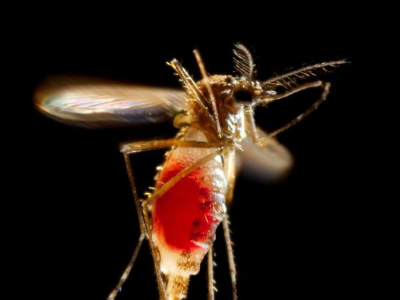Jun 27, 2012
Study finds drop in Salmonella-tainted animal feed, pet food
Salmonella contamination in animal feed, including pet food and treats, declined between 2002 and 2009, but two of the subtypes isolated from the products showed high rates of resistance to antimicrobials, according to a study yesterday in Foodborne Pathogens and Disease. The study was conducted by US Food and Drug Administration (FDA) researchers on samples collected from two feed contaminant surveillance systems between 2002 and 2009 for one of the systems and from 2007 through 2009 for the other. They based their findings on 2,058 samples collected from US manufacturers, distributors, and retailers. They also ran tests to determine serotypes and antimicrobial sensitivity. The overall prevalence of Salmonella positives was 12.5%, which dropped from 18.1% in the 2002 to 2006 time period to 8.4% during the 2007 to 2009 interval. Salmonella Seftenberg and Montevideo were the most
common serotypes. Investigators found that 54 of 257 Salmonella isolates were resistant to at least one antimicrobial, with Enteritidis and Typhimurium as the most resistant isolates, with rates at 88% and 71%, respectively. However, they noted that the number tested was relatively small. The drop in Salmonella contamination mainly resulted from a reduction in Salmonella in animal-derived ingredients, the group found. They said the antibiotic resistant findings are concerning, because the two subtypes with the highest levels are the most common serotypes found in human infections.
Jun 26 Foodborne Pathog Dis abstract
FDA clears test to quickly identify bacterial bloodstream infections
The FDA today allowed marketing of the first nucleic acid test that can identify 12 different bacteria known to cause bloodstream infections. In a statement, the agency said the Verigene GP Blood Culture Nucleic Acid Test (BC-GP), made by Nanosphere Inc., of Northbrook, Ill., can simultaneously identify the bacteria and three associated resistance genes in just a few hours after the first sign of bacterial growth, compared with traditional methods that take 2 to 4 days. Alberto Gutierrez, PhD, an official with the FDA Center for Devices and Radiological Health, said in the statement that bloodstream infections are always treated with antibiotics and that it's essential to identify as quickly as possible which one is appropriate for a specific patient. "This new test is an important tool that will help physicians treat patients quickly with the correct antibiotics," he added. The test identifies different types of Staphylococcus,
including methicillin-resistant S aureus, as well as Streptococcus, Enterococcus (including the vancomycin-resistant type), and Listeria. In a study of 1,642 patient blood samples from incubated blood culture bottles containing Gram-positive bacteria, the BC-GP results were consistent with the traditional method in 93% to 100% of comparisons, the FDA said.
Jun 27 FDA press release




















